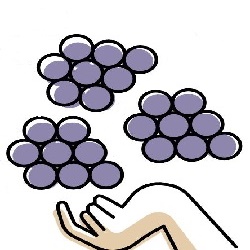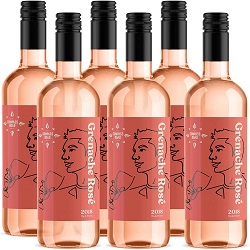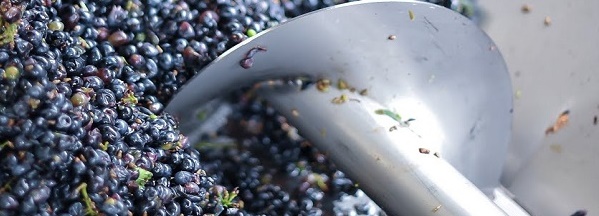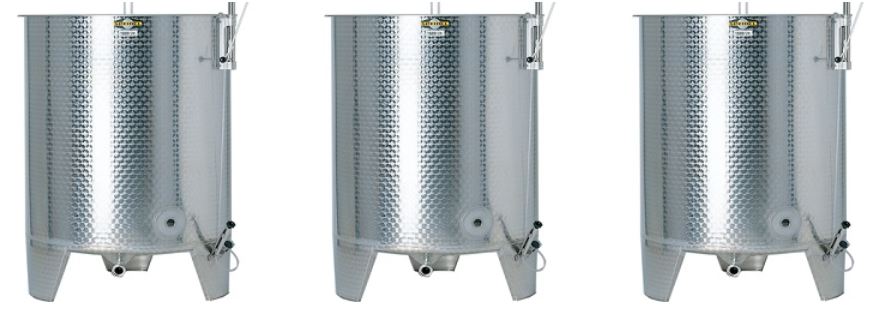Rosé Wine Vinification

| HarvestingBlack grapes are harvested and sorted. |
CrushingHarvested grapes are crushed to release the must. | |
MacerationA short maceration with the skins creates a pink juice. | |
PressingPressing separates the juice from the skins, seeds, and stems. | |
FermentationYeasts transform the pink grape juice into wine (sugar into alcohol). | |

| BottlingAfter the fermentation, the rosé wine is bottled. |
Harvesting
The first step to produce a rosé, is to harvest black grapes (Rosé wines are made from black grapes).
Some winemakers have separate vineyards for red and rosé wines, but red and rosé wines can also be produced from the same vinyard and the same harvest.
The best quality rosé wines are produced from hand-picked grapes.
Sorting
After carefull harvesting, the grape clusters are sorted for quality.
Unripe, diseased, and damaged grapes, bugs and leaves are removed.

Sorting grapes before crushing
Crushing
After sorting, the grapes are crushed to crack the skins and release the must.
Must is the crushed grape juice that contains flesh, skins, seeds, and stems.
Modern crushing machines are calibrated not to crush the seeds full of bitter tannins.

Grapes are crushed to release the must
Latin Vinum Mustum = Young Wine"
Short Maceration
Maceration is the process where the rosé wine receives its color.
The color comes from this skin contact with the juice.
A short skin contact (1 to 6 hours) creates a pink rosé.
A longer skin contact (1 to 2 days) creates a darker rosé.
Maceration less than 48 hours is called rosé vinification
Maceration more than 48 hours is called red vinification.

Must interacting with the skin in the maceration process
Pressing
Pressing separates the pink juice from the skin, seeds, and stems.

Alcoholic Fermentation
Alcoholic fermentation transforms grape juice into wine.
Yeasts transform the sugar in the juice into alcohol (and CO2).
The pink juice is fermented in steel or fiberglass tanks. Rosé wines are very rarely fermented in wood.

Juice + Yeast = Alcohol + CO2
Fermetation Temperature
Rosé wines (and white wines) are fermented at low temperatures (12-22°C, 54-72°F) to maximize the fresh fruit aromas.
Red wines are fermented at high temperatures (20-32°C, 68-90°F) to extract more color and tannins.
Differences Between White and Rosé
White wines are made from white grapes. Rosé wines are made from black grapes.
White grapes are pressed immediately after crunching, to avoid any skin contact. Rosé grapes are macerated with the skins after crunching, to absorbe taste and color from the skins.
Some white wines are maturating both in oak and bottles after fermentation (like some Chardonnays). Rosé wines are only stabilizing a short time in steel tanks after fermentation.